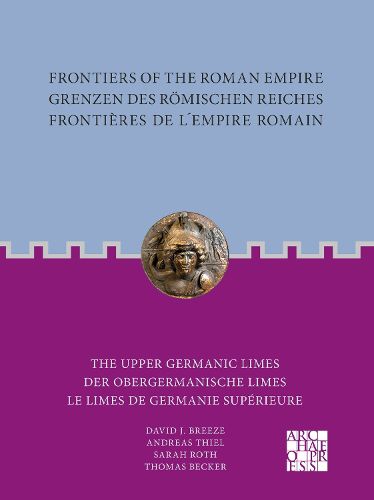Readings Newsletter
Become a Readings Member to make your shopping experience even easier.
Sign in or sign up for free!
You’re not far away from qualifying for FREE standard shipping within Australia
You’ve qualified for FREE standard shipping within Australia
The cart is loading…






Towards the end of Caesar’s Gallic War, Rome had reached the Rhine. Since the campaigns under Emperor Augustus (15 B.C.), larger troop contingents were stationed along the river, with focal points around Mogontiacum/Mainz and in northern Switzerland. After the Battle of the Teutoburg Forest (9 AD), when the attempt to occupy all of Germania had failed, the Lower Rhine remained the frontier of the empire’s territory until Late Antiquity. East of the Middle and Upper Rhine, however, the Roman sphere of power was pushed forward several times over a period of almost 200 years, and from 90 AD at the latest, the construction of artificial borders was initiated. When the Roman expansion came to an end around 160 AD, the province was secured in its furthest extension by the Frontal or Outer Upper-Germanic Limes , which existed until the middle of the 3rd century. This book illustrates the historical and archaeological significance of the Upper Germanic Limes and provides an up-to-date overview of its manifold features in the field.
$9.00 standard shipping within Australia
FREE standard shipping within Australia for orders over $100.00
Express & International shipping calculated at checkout
Towards the end of Caesar’s Gallic War, Rome had reached the Rhine. Since the campaigns under Emperor Augustus (15 B.C.), larger troop contingents were stationed along the river, with focal points around Mogontiacum/Mainz and in northern Switzerland. After the Battle of the Teutoburg Forest (9 AD), when the attempt to occupy all of Germania had failed, the Lower Rhine remained the frontier of the empire’s territory until Late Antiquity. East of the Middle and Upper Rhine, however, the Roman sphere of power was pushed forward several times over a period of almost 200 years, and from 90 AD at the latest, the construction of artificial borders was initiated. When the Roman expansion came to an end around 160 AD, the province was secured in its furthest extension by the Frontal or Outer Upper-Germanic Limes , which existed until the middle of the 3rd century. This book illustrates the historical and archaeological significance of the Upper Germanic Limes and provides an up-to-date overview of its manifold features in the field.